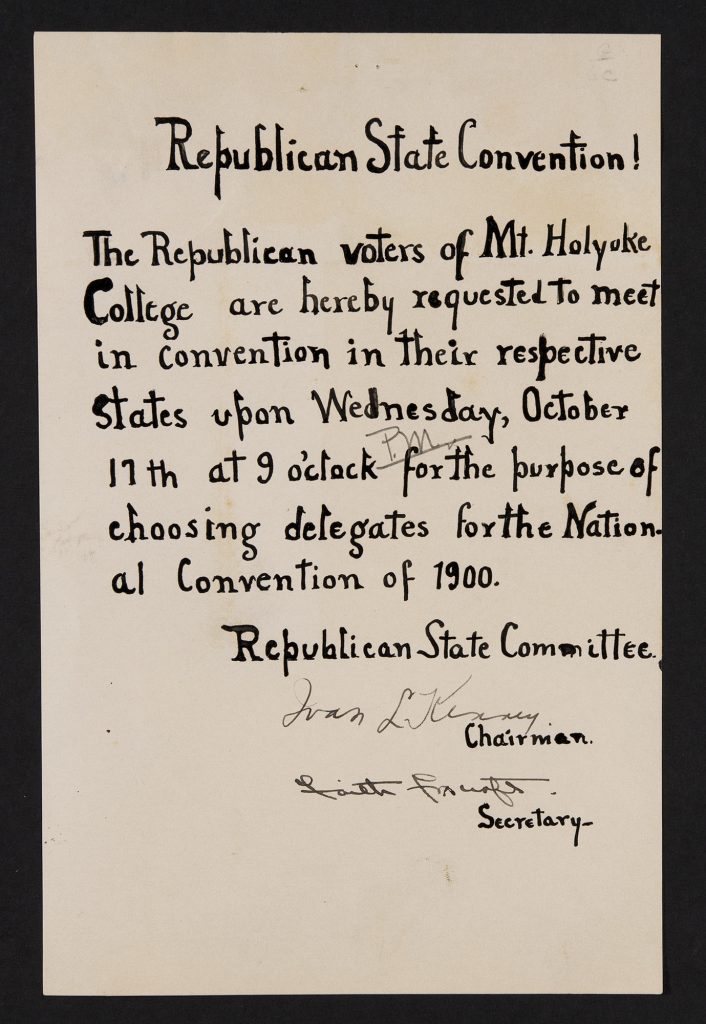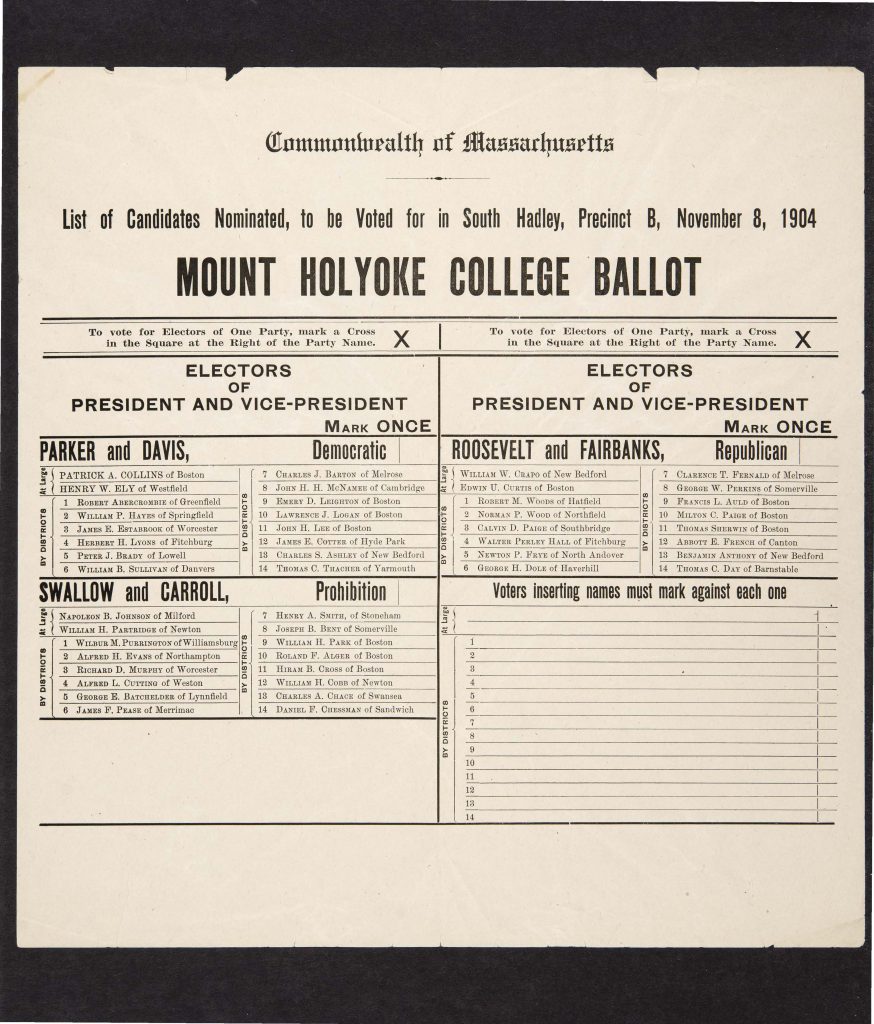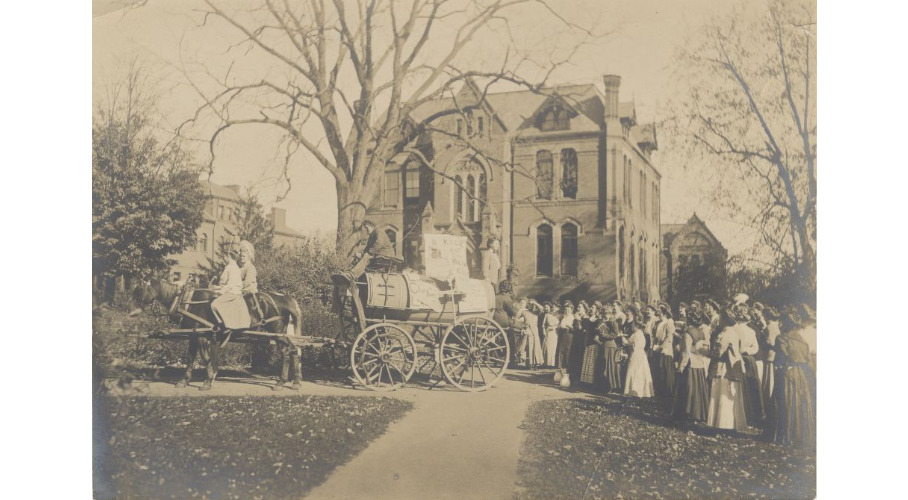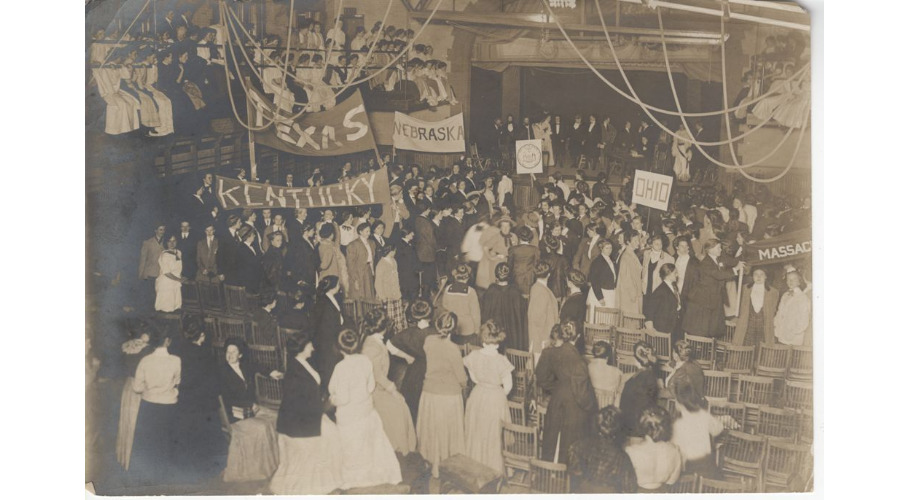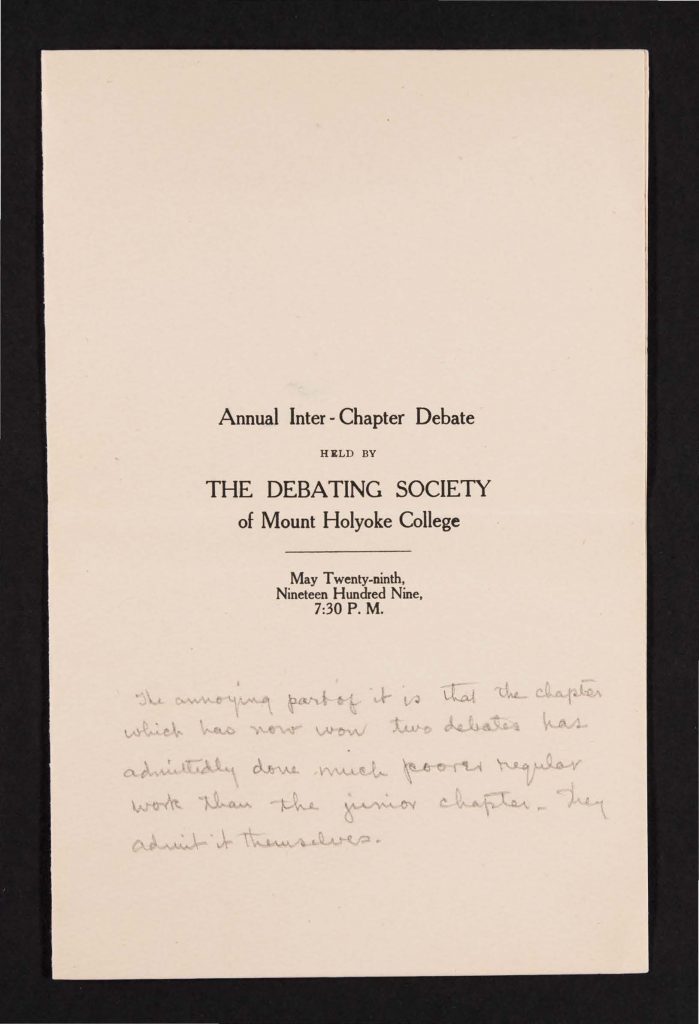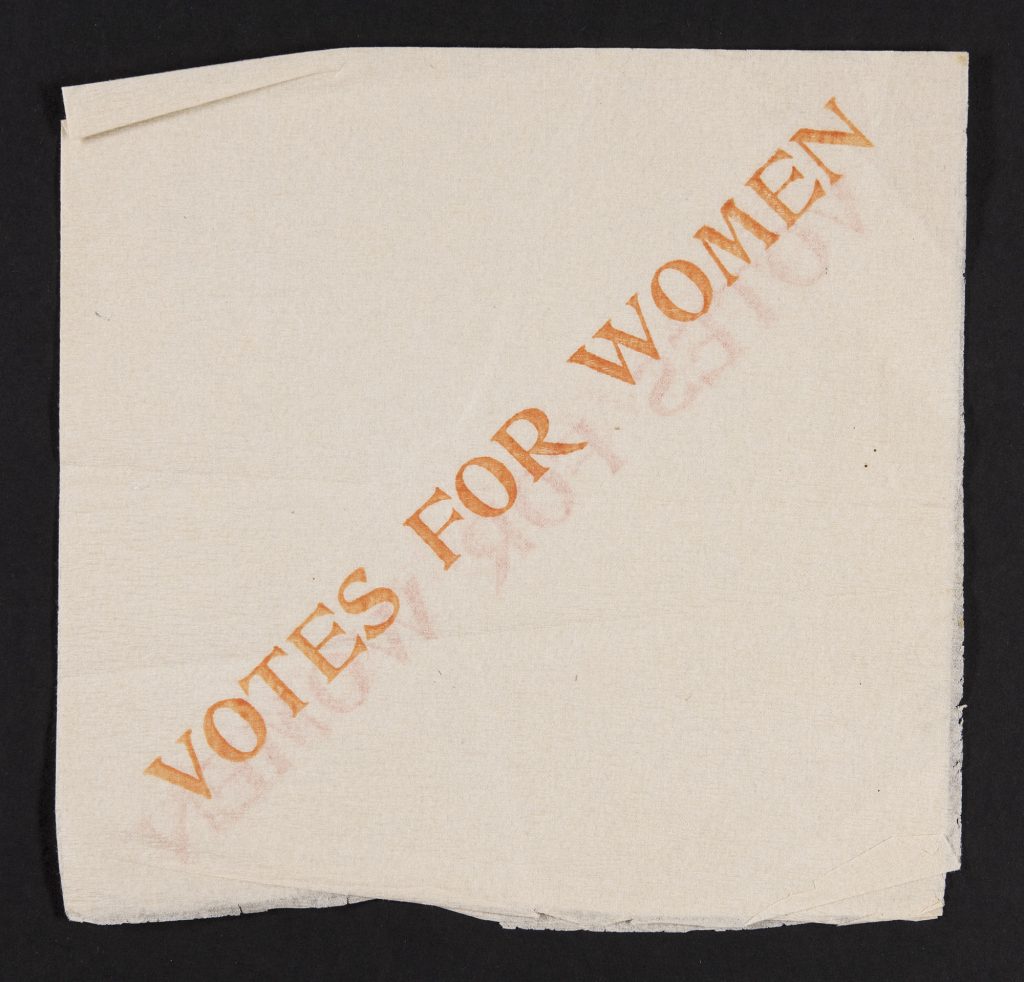Republican Convention Flyer, 1900
From 1860 to the passing of the 19th Amendment in 1920, Mount Holyoke students held elaborate mock campaigns and elections on campus. This included mock state conventions where they dressed as male candidates, gave speeches, sang political songs, and voted for representatives from their residence halls to go to the “national election.” This flyer from Mount Holyoke’s Republican State Committee was an invitation to voters to attend the state convention in 1900. It demonstrates that even two decades before the 19th amendment was passed, Mount Holyoke students were politically active to the best of their ability.
Mock Ballot, 1904
Mock ballots were used by Mount Holyoke students to vote in campus-wide elections every four years. Just as in the real national election, Roosevelt won the mock election at Mount Holyoke. Unlike Taft and Wilson, Roosevelt was a long-time advocate of women’s suffrage and was supported by the National American Woman Suffrage Association.
Prohibition Candidate Campaigning, 1908
Representing the Prohibition candidate, Carolyn Sewall, Class of 1910, is campaigning for a mock presidential election by making a speech on the back of a wagon to a crowd of enthralled listeners. Drawn by two horses, the wagon carries an oversized liquor barrel covered in prohibitionist slogans such as “Kick out the keg!!!”
Susie Martin, Class of 1911, Letter to Mother, 1908
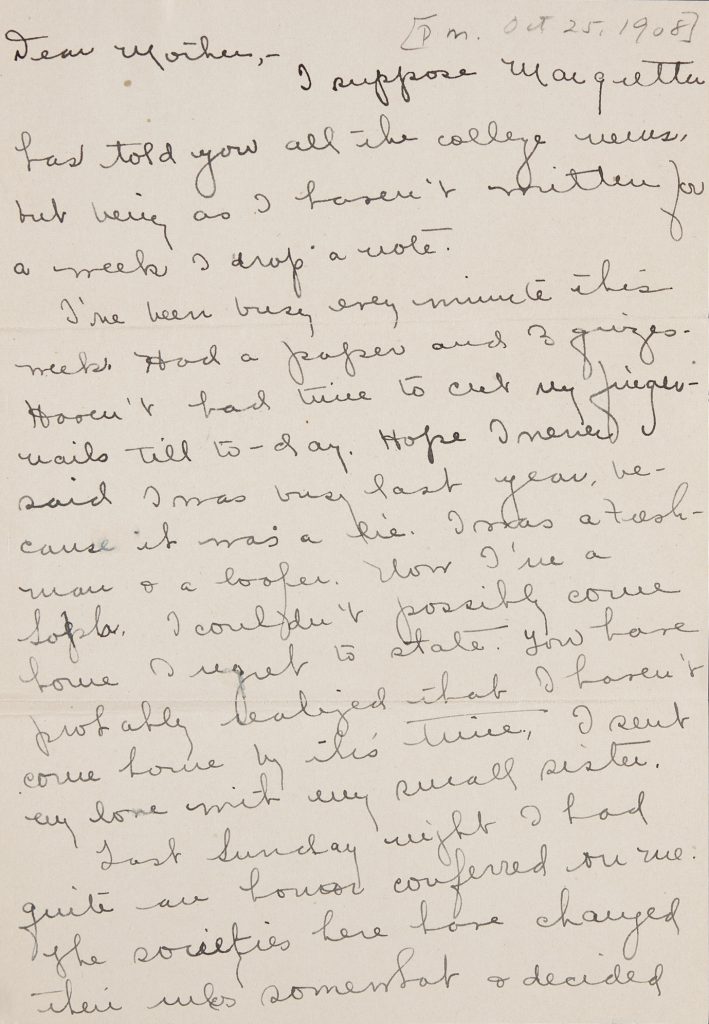
In a letter to her mother postmarked October 25, Susie Martin, Class of 1911, mentions attending a mock Republican Convention. She notes that “[a]ll the girls were dressed like men, and had wigs + beards” to impersonate various candidates. Students dressed as convention attendees including Carrie Nation, Howard Taft, Nicholas and Alice Longworth, and Theodore Roosevelt. Carrie Nation was a militant member of the temperance movement, so the student dressed as her included physical actions: after seeing “a pitcher of wine on the table… Carrie Nation broke it with her hatchet. Quite exciting.” The students’ commitment to their roles displays not only an awareness of politics, but a deep interest and understanding of the prominent figures and platforms at a time when women were still a dozen years from the vote.
Mount Holyoke Students Participate in State Convention, 1908
Before Mount Holyoke’s mock national election, where the student representatives from each state would meet to vote, the students held a mock state convention. In a letter at the time, a student explains that at this mock convention, students were organized by their residence hall, each of which represented a state. This photo from 1908 shows the “state convention.” The states represented in this photo are Kentucky, Texas, Nebraska, New York, and Massachusetts, but it is possible that others are out of frame. There is no clear indication of why these states were chosen to represent each residence hall, as many of these states are not representative of the Northeastern student population.
Program from Women’s Suffrage Debate, 1909
Participants of the Mount Holyoke Debate Society agreed that the subject of equal suffrage was relevant for their annual inter-society debate. An unknown observer left penciled comments on the program summarizing each argument. The affirmative speakers asserted that women’s suffrage “is the only logical step” and women who want the vote should not be denied simply because some women don’t want to vote. The negative speakers argued that “the female vote is more easily manipulated than the male” and would dramatically alter the influence of women in politics, which was considered “non-partisan” at the time. The chapters initially tied and the winner had to be decided by the Debate Society president: she voted in favor of national suffrage.
Votes for Women Decorative Napkin, n.d.
Little is known about this object. It is possible that it was made as a napkin for a suffragist luncheon but was saved as a souvenir.
Mock Ballot, 1912

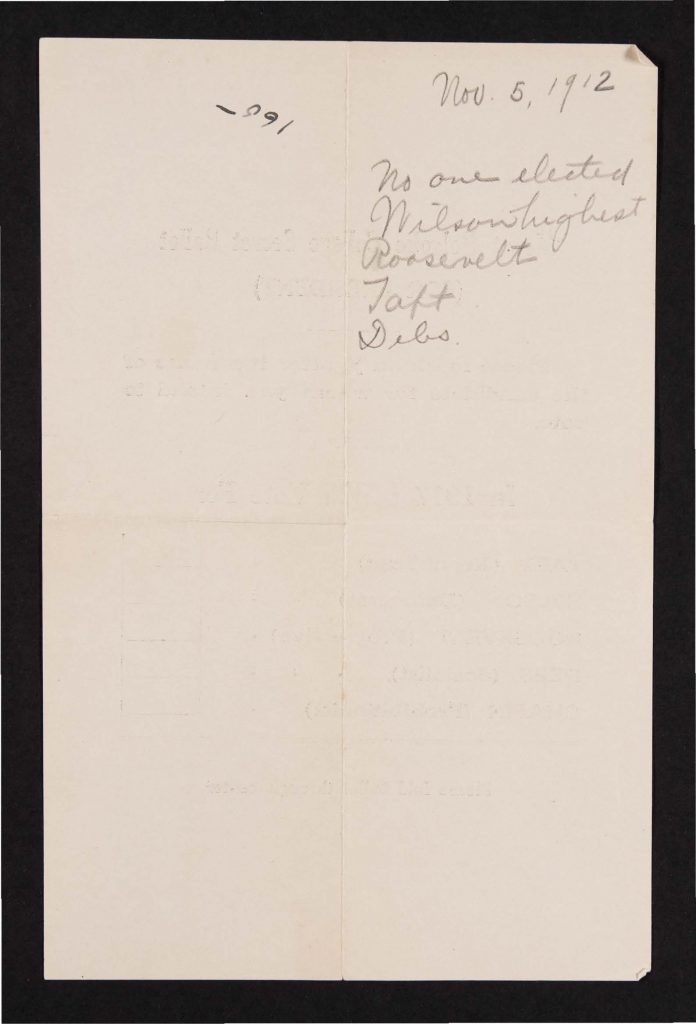
During the 1912 mock election at Mount Holyoke, presidential candidates Roosevelt, Taft, and Debs received the highest number of votes while almost no students voted for Wilson. The student who owned this particular ballot voted for Taft. An opponent of women’s suffrage, Wilson won the real election.
